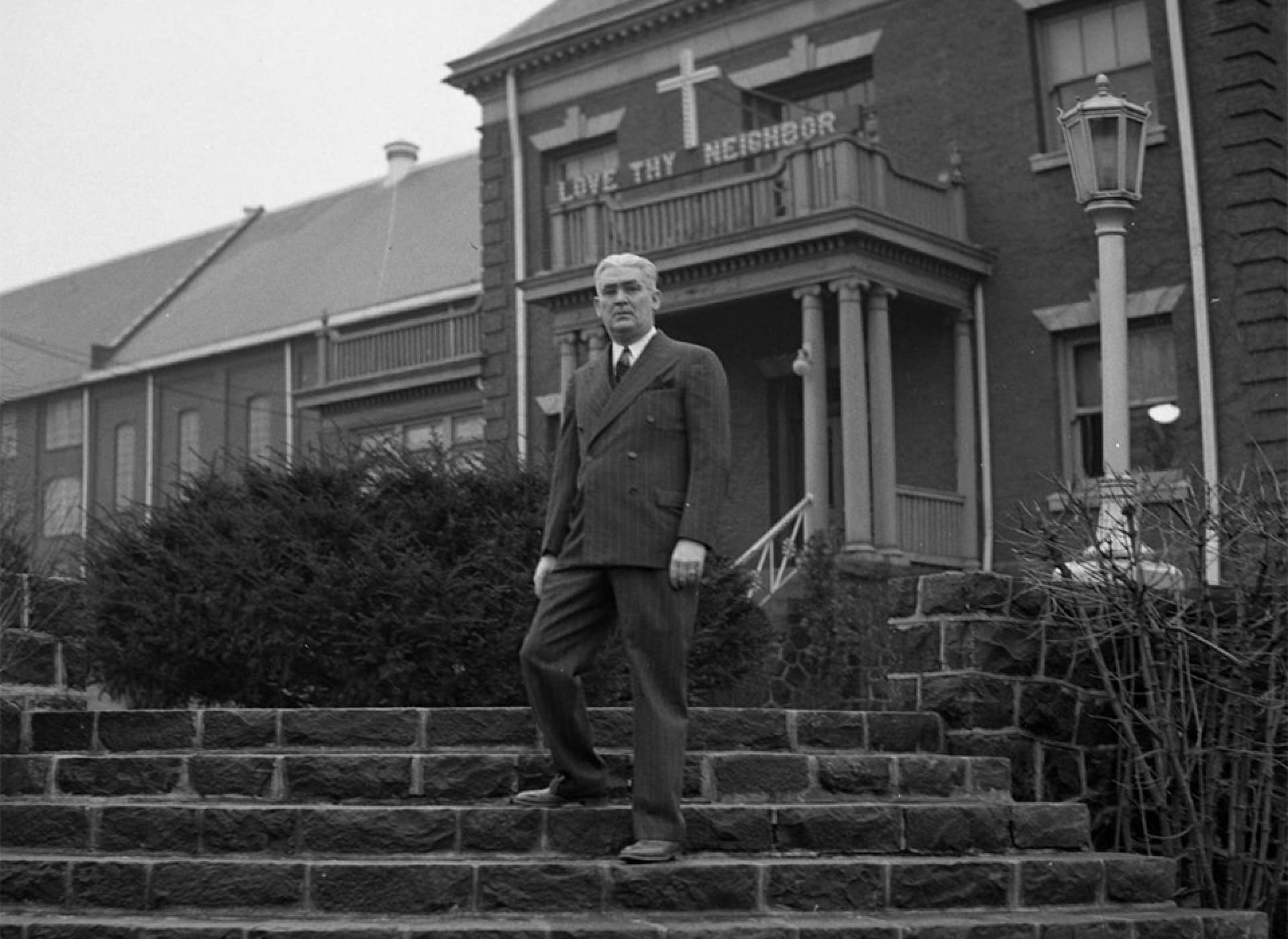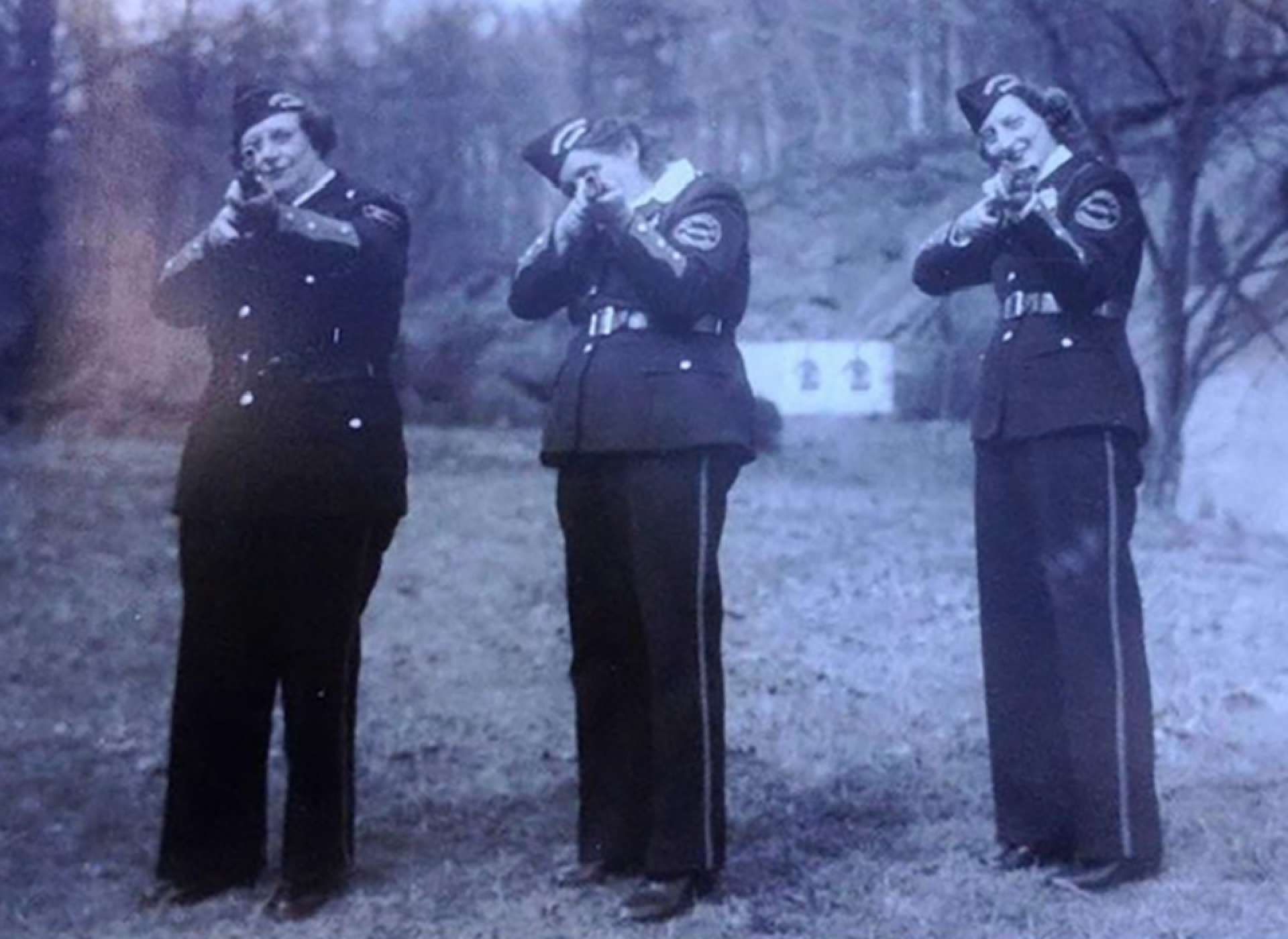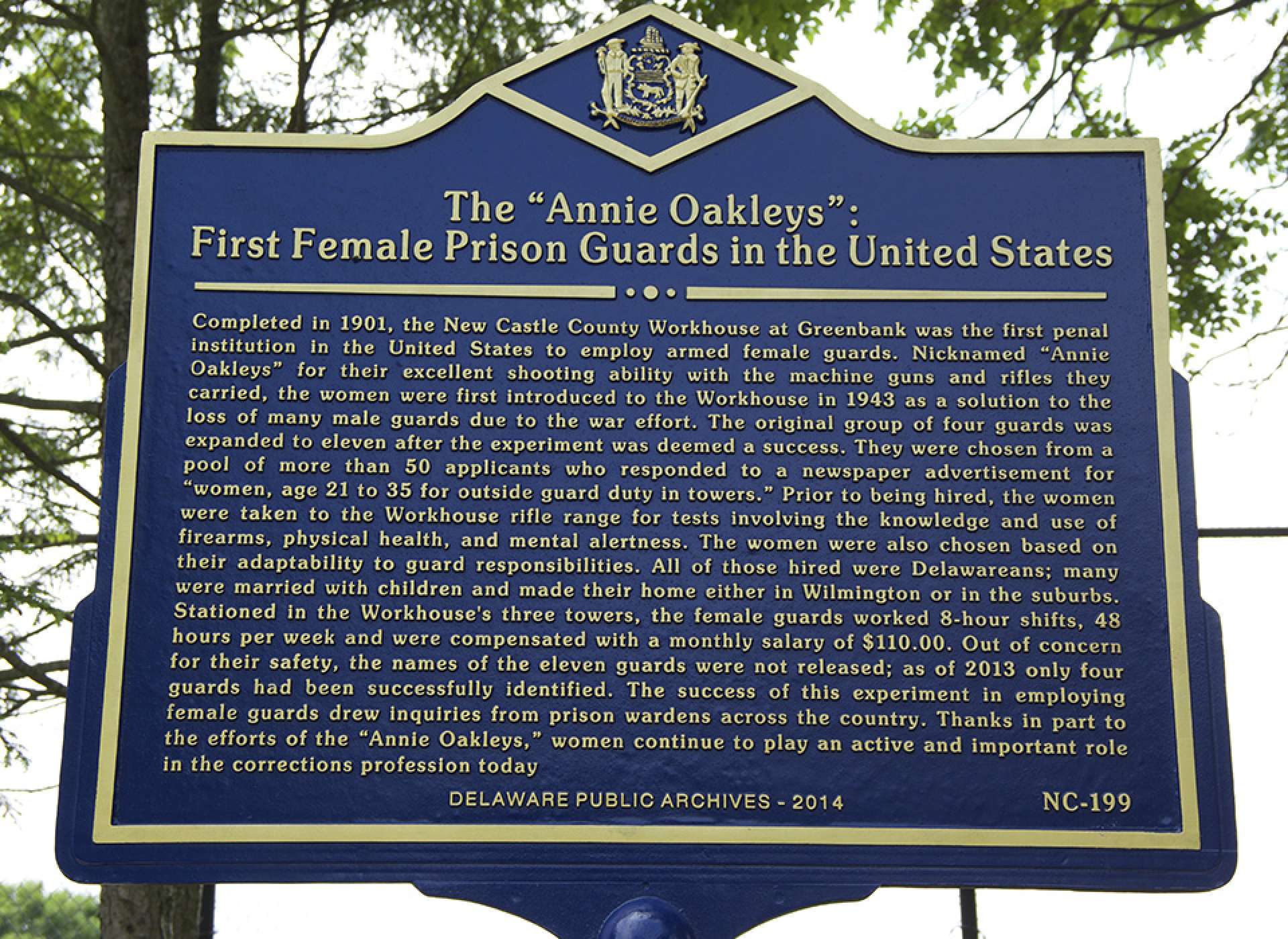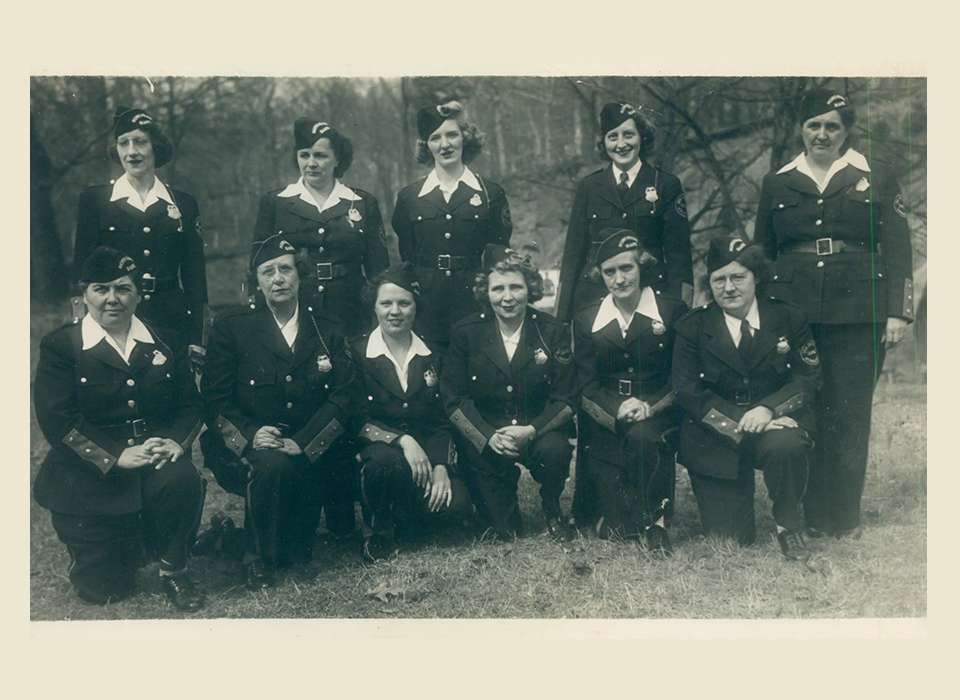Top image is of 11 Annie Oakleys in 1943, courtesy of Rhonda Hutchinson.
“WOMEN—age 21 to 35 for outside guard duty in towers. For further information, call the New Castle County Workhouse.”
On January 2, 1943, women in Wilmington, Delaware found the above notice in the help wanted section of The Morning News, right below the standard ads from employers looking for waitresses, stenographers, and housekeepers. The workhouse (as prisons were sometimes referred to) desperately needed guards to man the towers while the local men were serving overseas or earning more money in wartime industries.
Just as other sectors of the economy suffered from labor shortages and turned to women to fill their ranks, the New Castle County workhouse became the first prison to employ women as guards, representing a little-known history of Rosie the Riveter’s counterpart: the “Annie Oakley” sharpshooter who patrolled the prison yard from high upon a tower with her rifle or submachine gun.
More than 50 local women—most married housewives in their 30s with some part-time employment in sales or secretarial work—applied for the job. Nearly all of the hopeful Annie Oakleys were “crack shots” who had taken up shooting as a hobby. Prison warden Elwood H. Wilson required all applicants to pass basic tests in “knowledge of firearms, use of [firearms], and other tests as to physical health and mental alertness.”
Wilson also rated the women on their “adaptability” to guard duties, noting that this was not the “normal” line of work for women who would be expected to respond quickly to any prisoners who attempted to escape over the “forbiddening, 13-foot high spiked-metal and barbed-wire-topped fence surrounding the grounds.”

New Castle County Workhouse Warden Elwood Wilson, February 16, 1942, courtesy of the Delaware Public Archives.
By the spring of 1943, Wilson hand-selected four of the 50 applicants to serve as the first Annie Oakley prison guards. Dressed in tailored blue slacks and jacket complete with matching hat, the four women (which eventually grew to 11) patrolled the grounds from the main guard tower with “their machine guns and rifles as their authority.” The Annies worked eight-hour shifts (a 48-hour week was standard) and made $110 per month. Some took their meals at the prison before returning home to their families.
Once the Annies settled into their new roles, Wilson’s interactions with the women revealed that they enjoyed their new jobs. “They seem content and feel that they are helping with the war effort and at the same time having a great experience,” he told a reporter with The Morning News.
While the Annies never had to turn their guns on escapees, they nevertheless commanded authority and respect from the male guards and prisoners. Wilson reported that the prison’s low population of 260 men and 15 women probably made for a more easily-controlled environment, but the prisoners also seemed “to have a healthy respect for the women guards and many of them have heard of their ability with rifle and pistol.”
There was no greater champion of the Annies than Wilson. He repeatedly sang the praises of the women guards in local papers:
“These women guards have proven they are good shots; they have nerve and they have orders to fire on sight at anyone attempting to scale the fence and heaven help anyone who does try it.”
Elwood H. Wilson, Warden
He also explained that with women already doing “good work in driving trucks, working in railroad section gangs, and in defense plants, and as mechanics…there is no reason why they won’t do a good job here.”
What began as an “experiment” in employing women in a “man’s job” became a success. As news spread of the Annies, Wilson received inquiries from other wardens from across the country interested in establishing their own programs employing women as guards. While Wilson always spoke highly of the Annies, he also respected their privacy, as they may not have wanted friends and family to worry about their safety at the prison or to think that they abandoned their household duties. He prohibited photography of the sharpshooters and never revealed their names to the press.
The secrecy surrounding the Annies made identifying them difficult for decades. When the war ended, men returned to their guard positions once held by the Annies. Most of the women did not tell younger generations of their families about their time at the prison during the war. It was not until 2013 when a local Delaware historian, Bill Salerno, began researching his family following his retirement and came across some records relating to the Annies in the local library. In the following months, he worked to identify seven of the 11 Annies in a photo, including Clara Heal–my great grandmother-in-law.

Clara Heal (center) taking aim in 1943, courtesy of Rhonda Hutchinson.
Rhonda Hutchinson, Clara Heal’s granddaughter and my mother-in-law, never recalled Heal speaking of her time as an Annie Oakley, but is proud of the essential wartime work her grandmother did, as well as the Historic Marker installed by the Delaware Public Archives in 2014 at the site of the former prison. Although Heal wasn’t forthcoming with her own wartime experiences, Hutchinson remembers some family members during dinners and gatherings warning the kids that they’d better behave because “[their] Grandmother was a sharp shooter at the Workhouse.”

Annie Okaleys Historic Marker installed in 2014 at the site of the former New County Castle Workhouse in Wilmington, Delaware, courtesy of the Delaware Public Archives.
Though less-known today than Rosie the Riveter, the Annie Oakleys played an important role on the Home Front during the war when they stepped up to do a “man’s job” and proved themselves through their dedication and skill.
Stephanie Hinnershitz, PhD
Stephanie Hinnershitz is a historian of twentieth century US history with a focus on the Home Front and civil-military relations during World War II.
Cite this article:
MLA Citation:
APA Citation:
Chicago Style Citation:





![Max Fuchs, New York City cantor, sings as Rabbi Sydney [sic] Lefkowitz, Richmond, VA, conducts the first Jewish services from Germany.](/sites/default/files/styles/max_650x650/public/2025-10/image1.jpg)



